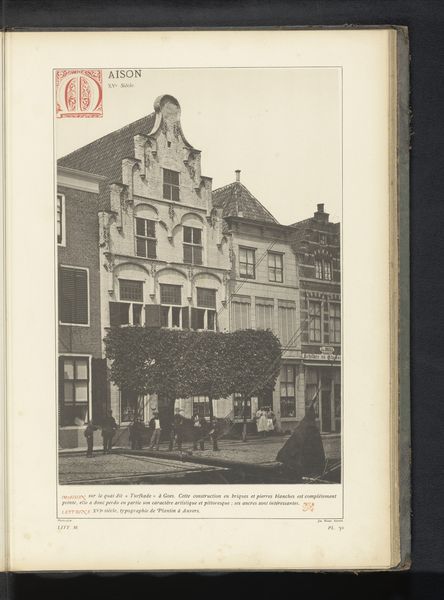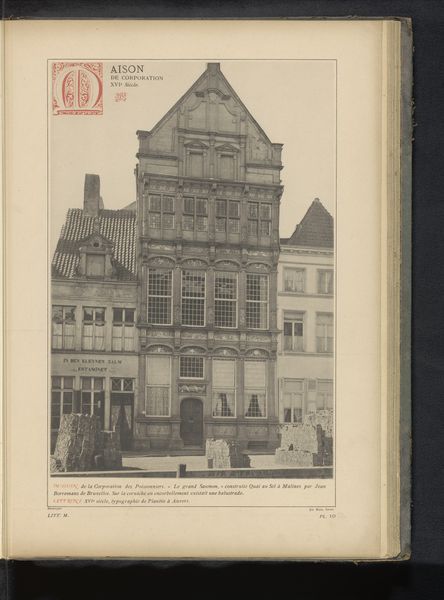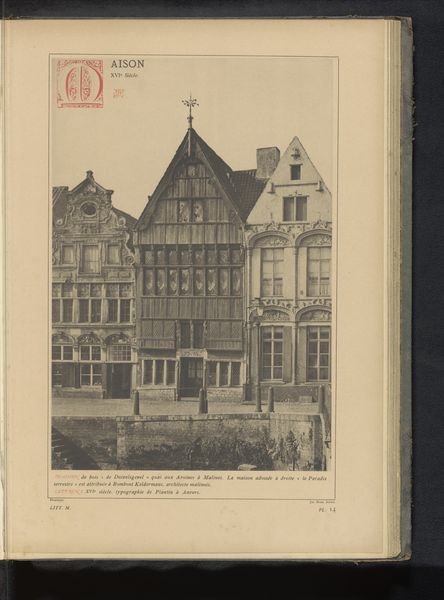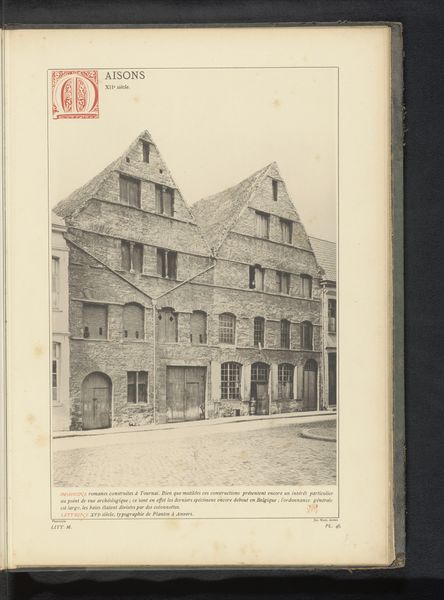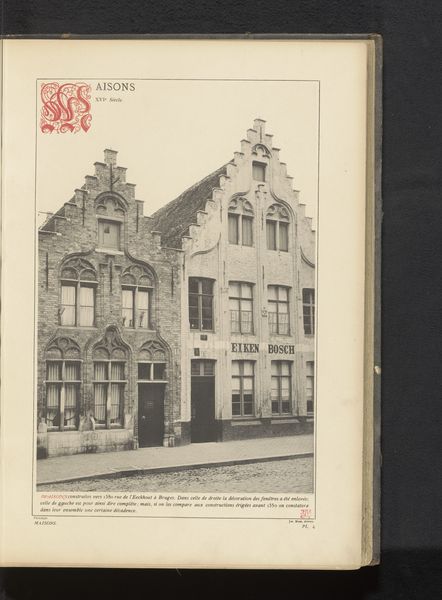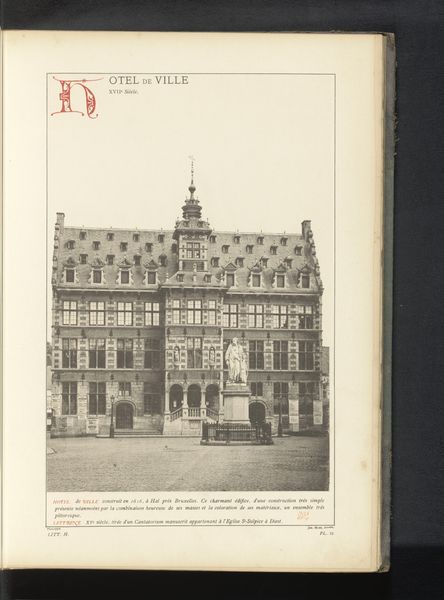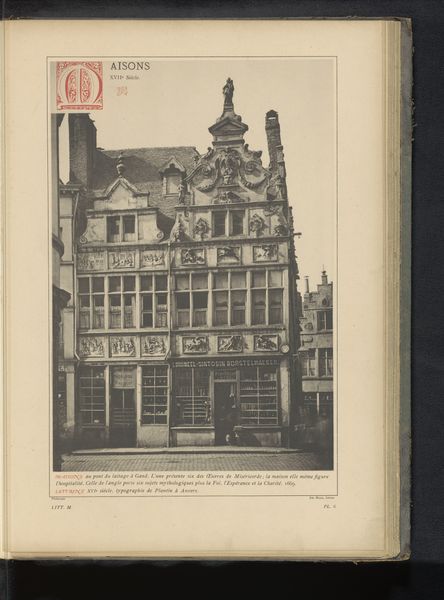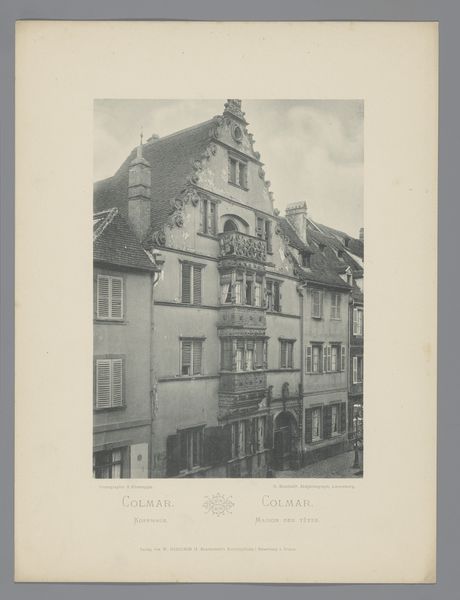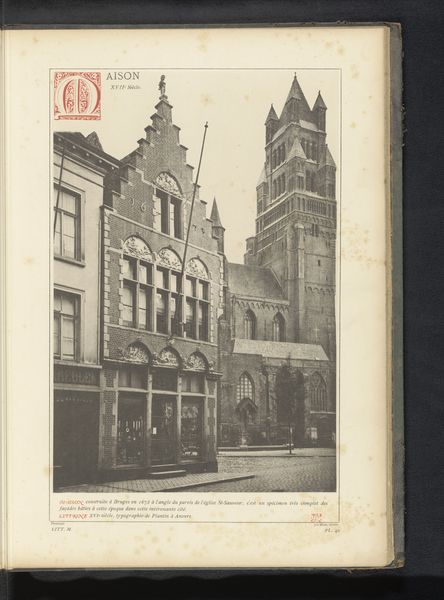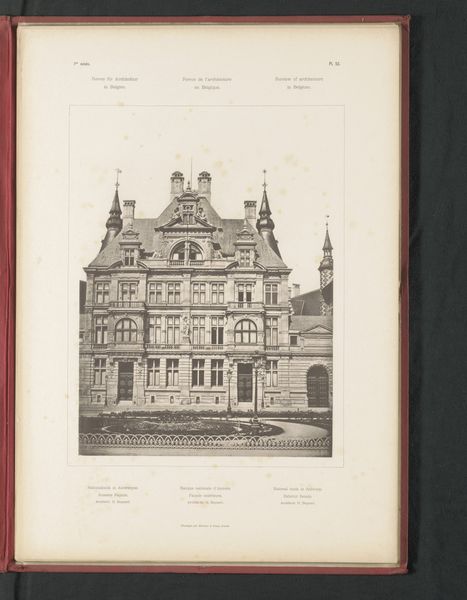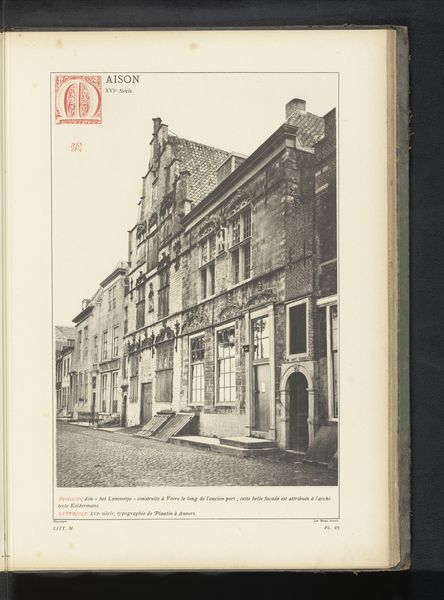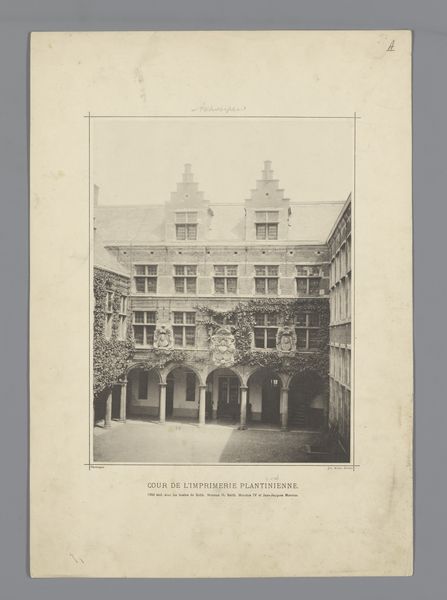
print, architecture
# print
#
cityscape
#
history-painting
#
architecture
Dimensions: height 336 mm, width 229 mm
Copyright: Rijks Museum: Open Domain
Curator: What a fascinating image. Here we have an anonymous print from before 1880, titled "Gezicht op huis de Lepelaar in Mechelen, België." It’s a cityscape, meticulously detailed. Editor: Whoa, it feels like peering into another century, doesn’t it? Sort of melancholy but intriguing, this whole scene makes me think about the lives that must've unfolded within those walls. What is the print done on? Curator: Well, given its age and appearance, most likely this is either a lithograph or an early photographic reproduction that's been bound into a volume. It captures a building called 'de Lepelaar' – the Spoonbill house. You see the clear depiction of its architectural design. I believe that this building in its time and even today might still stand for Mechelen identity and pride. Editor: Oh, wow, so there’s that sense of permanence—the solid building in monochrome, that gives the building monumentality as if built to last. And then that other little building there… it almost speaks to that tension between history and daily life? Curator: Absolutely! These old prints served to document and disseminate knowledge about architectural styles. This particular example showcases late medieval or early Renaissance influences typical in Belgian civic architecture. The precise window design and intricate tracery showcase wealth. These historical prints allowed the rising merchant class to signal and consolidate its influence through urban planning. Editor: Mmm, a narrative embedded into the very stone. Curator: Indeed, and notice also how this image exists inside the print collection— a kind of secondary layer. The image is meant for consumption and wide sharing of knowledge about local treasures and how their forms might affect people. Editor: Yes, almost like this physical photograph and our discussing it now, it brings the original moment to life. How about that inscription in French there? Do you know more about it? Curator: It details its construction by a type designer which explains the intricate ornaments around the building—these designs helped to make buildings as appealing to the general public as possible, signaling quality of living. I also suspect it had something to do with municipal administration or justice. These buildings frequently also had judicial or government facilities in that era, symbolizing authority. Editor: So much symbolism, I love that you can see all the social contexts in it... Curator: Precisely! And thinking about this, from the artist's choice of capturing this to the distribution channel, it becomes such a window into an older society… Editor: A window, yes. Or a time machine that doesn't move physically, but imaginatively! Thank you for unlocking that for me, I wouldn't be able to explore it by myself!
Comments
No comments
Be the first to comment and join the conversation on the ultimate creative platform.
